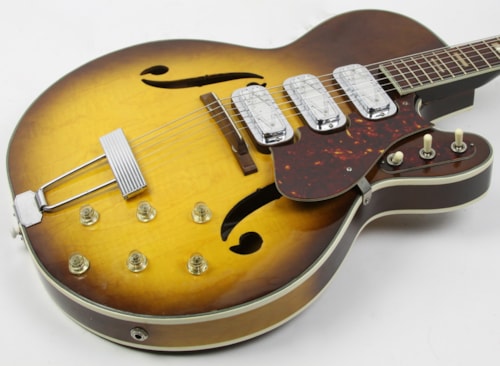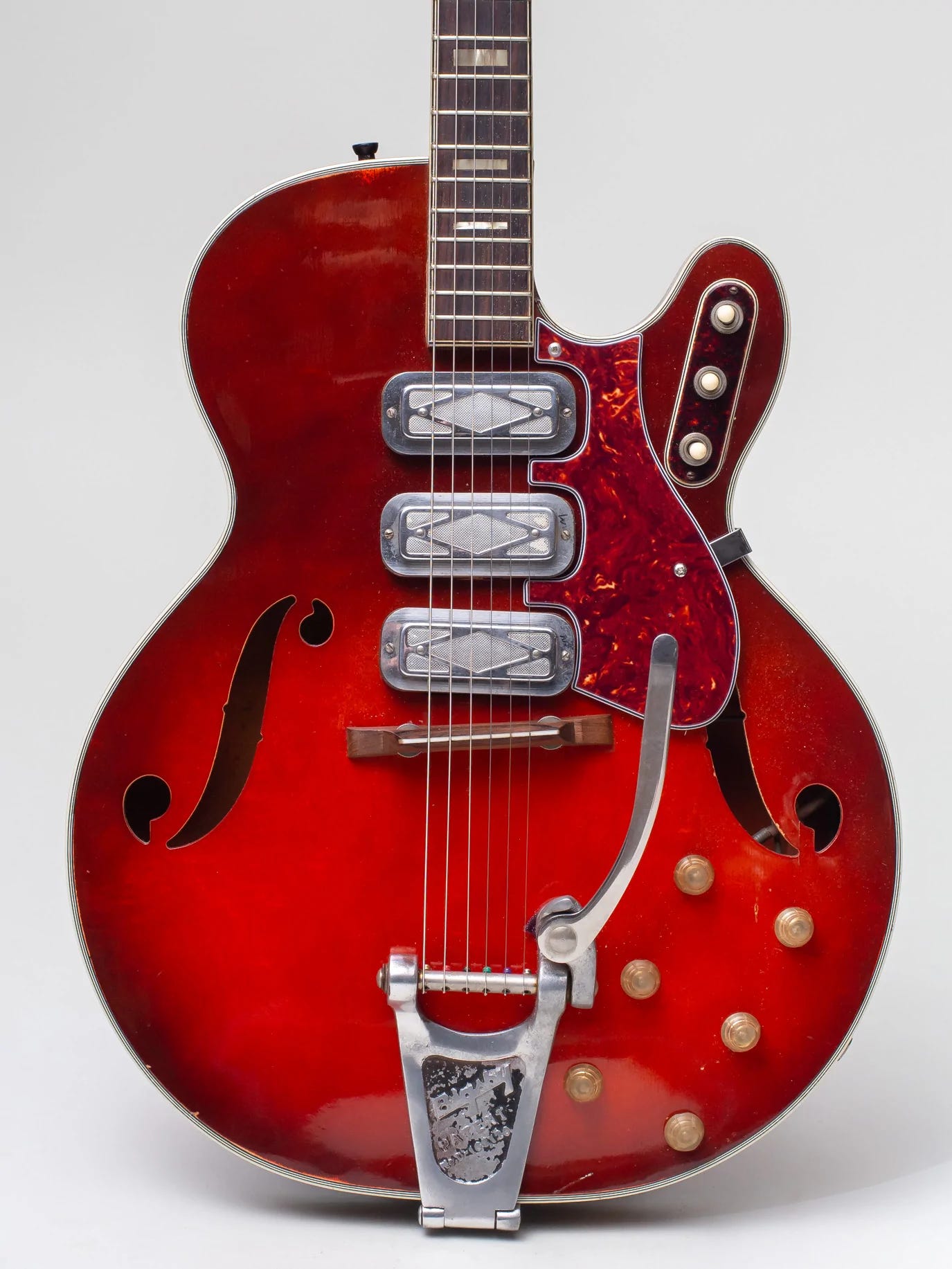This week’s “Lick of the Week” in the key of C, by Will Ray.
Sears, Roebuck & Co started selling stringed instruments in the late 1890s, mostly ukuleles and guitars built by Harmony in Chicago. The instrument line was so successful for Sears that they bought Harmony outright in 1916
That is the same year Sears started marketing their housebrand, Silvertone, beginning with a hand-crank phonograph. That morphed into radios, batteries and eventually Silvertone instruments and amplifiers.
It’s a little murky, but in 1940 Sears shed Harmony from its portfolio. At that point the instrument side of the business was so large Sears was sourcing from several manufacturers and maintained a contract relationship with Harmony. Essentially, if a guitar was made for Sears by Harmony it had the Silvertone badge. If it was made by Harmony and went to any other store, it had the Harmony badge or whomever else may have contracted with Harmony for their own brand. Further, Harmony had several subsidiary brands they acquired over the years some of which included Stella, Sovereign, and La Scala.
Those “other brands” can be surprising and included some 50 other labels. Some of FENDER’s early acoustic guitars were actually made by Harmony in the late 1960s!
Here’s an abbreviated Silvertone guitar timeline
- 1941 was the first year Sears offered a Silvertone electric hollow body guitar in the catalog.
- 1954 was the first year Sears offered a Silvertone solid body electric, likely by Harmony.
- In tandem, Danelectro started producing guitars for the Silvertone label that year as well.
- Over the years other Silvertone label manufacturer’s included Valco/Supro, Kay, and Teisco.
Fast forward to 1959 and the Silvertone 1429 was released, made by Harmony, and it was the highest-end offering from Sears at the time. Sporting a trio of DeArmond Golden Tone pickups with individual pickup selectors and a volume/tone control for each it has the mid 60s “switch bling” going a few years ahead of its time. The body was made of maple and spruce with a fully bound celluloid binding, rosewood fretboard, and pearloid block inlays.
I must diverge here because the Harmony version of the same guitar (2 pickups) was the H-70 Meteor and it has some serious 1960s musical prominence. The H-70 happened to be one of a young Keith Richards’ favorite guitars of the time and was used on The Rolling Stones first album. The raw sound generated from the DeArmond Golden Tone pickups can also be heard loud and clear on The Kinks’ You Really Got Me.
The Silvertone 1429 was replaced in 1963 with a Bigsby-added model 1454.
In between those two models came the Silvertone 1446 in 1961. One urban legend claims Harmony built some guitars for Gibson in the early 1960s and as part of their agreement Harmony was able to get their hands on a good stash of Seth Lover mini humbuckers.
Harmony put the pickups in the 1446 until the model was discontinued in 1966 making this one of the more highly sought after Silvertone collectables. It’s also known as the “Chris Isaak” guitar because he frequently used and was photographed with this model during the mid and late 1980s. Silvertone was Chris’ first album title in 1985.
For whatever reason, Silvertone branded guitars and other equipment last appeared in 1972. Sears continued to sell guitars through the 1970s, but not labeled as Silvertone.







2 comments
Cliff, a great resource that I’ve used over and over is- https://www.silvertoneworld.net/
And here’s another one I’m less familiar with- https://www.vintagesilvertones.com/
In terms of groups there are several on Facebook if you are on Facebook, just do a quick search.
Just purchased a late 60’s Silvertone 1475 with original case in awesome condition. It is the same model my Late father taught me chords on, so it’s also a sentimental purchase. If anyone could direct me a Silvertone enthusiast group, I would really appreciate it. Thanks!!!